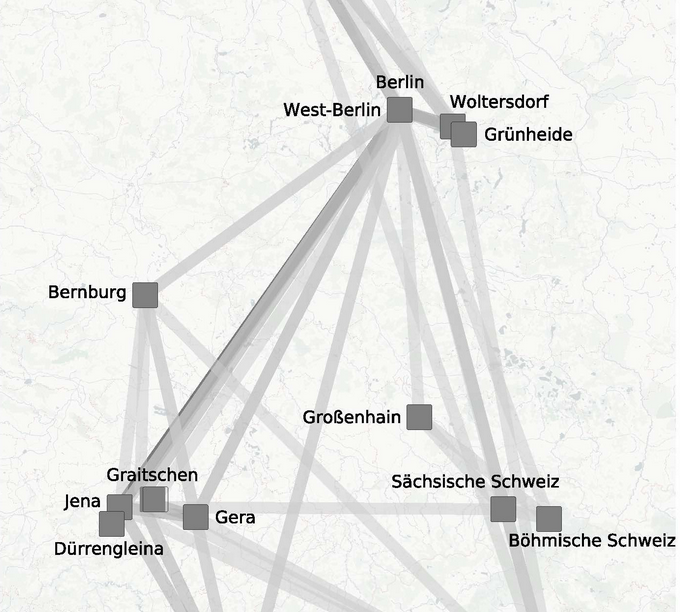Geospatial Social Networks of East German Opposition (1975-1989/90)
Keywords:
GDR, opposition, regional connectedness, Roland JahnAbstract
During the last two decades single photographs and photograph corpora have gained in popularity as sources for historical research. In addition to their important function as carriers of the past, photographs also contain valuable information about past social relations. However, to utilise this information a researcher needs a more structured dataset, a photograph corpus containing rich metadata, which allows us to explore and analyse contextual information stored in alphanumeric form. My paper will exemplify how photography corpora could be used as a source for network analysis seeking to explore, reconstruct and visualise hidden historical social networks. The empirical case of my paper revolves around regional and interregional networks of East German dissident movement. The main empirical material explored for network analysis and visualisations consists of a large enriched photograph corpus on East German dissident movement maintained by Robert Havemann Foundation in Berlin. Based on this corpus my paper will explore the structure and dynamics of regional and interregional networks of East German opposition. The results introduce evidence that regional connectedness based on personal mobility among the East German dissidents both changes and increases over time, thus resulting in continuously evolving patterns of social interaction. Further, the analysis of Roland Jahn’s geospatial networks evidences the usefulness and power of historical network analysis when it comes to tackling changes in patterns of social interaction.

Downloads
Published
How to Cite
Issue
Section
License
A Creative Commons Attribution-NoDerivatives 4.0 (CC BY-ND 4.0) license applies to all contents published in JHNR. While articles published on JHNR can be copied by anyone for noncommercial purposes if proper credit is given, all materials are published under an open-access license with authors retaining full and permanent ownership of their work. For details please consult the Open Access and Copyright Notice.

